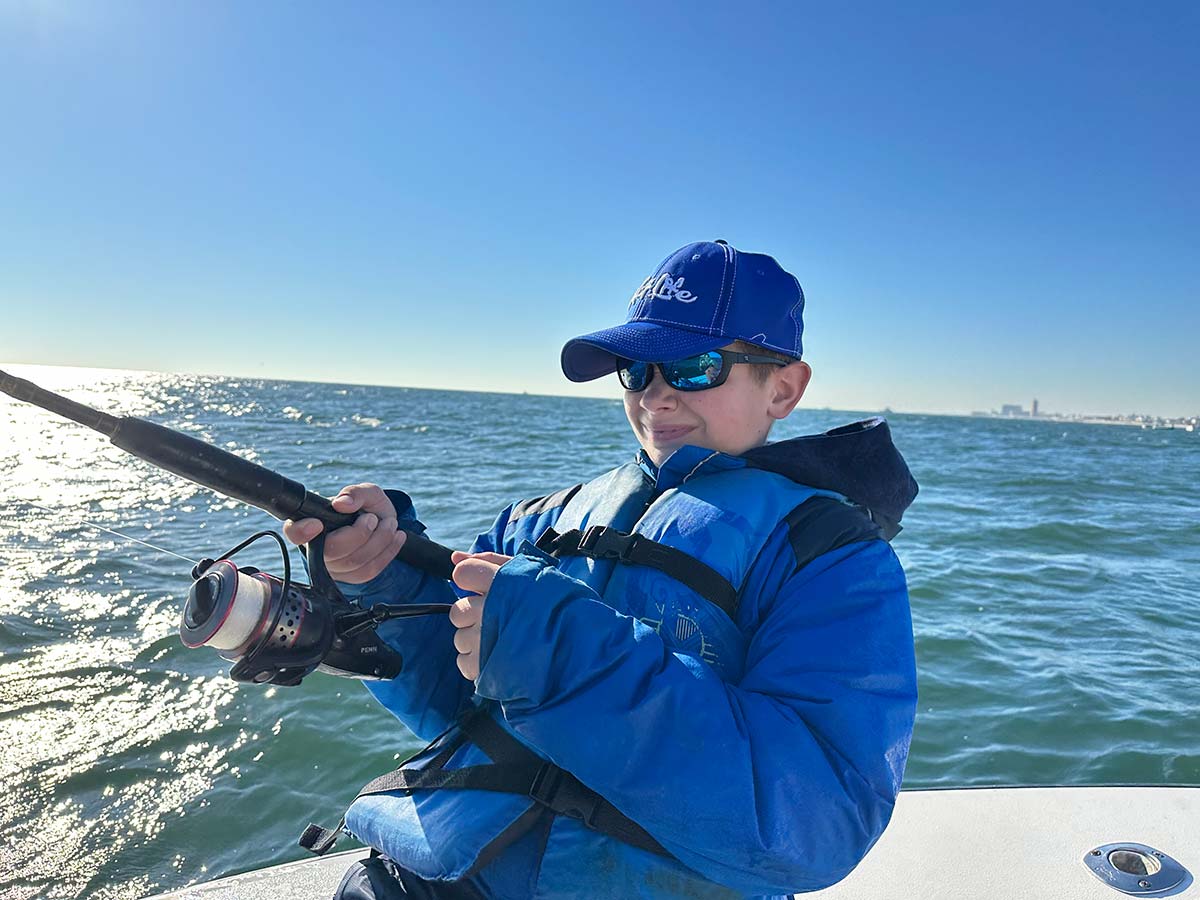
Never pump an inshore fish that is of importance.
“Don’t pump that rod!” the captain instructed with haste and concern. “Just reel at an even, steady pace.” We were on the Nantucket Shoals targeting doormat fluke. This is a place where a slight technical mistake by the angler can lead to heartache. “Not too fast and keep him just under the surface and lead him my way when he comes to the top.” Under the captain’s tutelage, my friend was able to direct his 8-pounder into the net. Crisis averted this time. The captain and patron exchanged fist bumps and then a dialogue took place regarding the proper cranking of huge fluke. My buddy, who listened intently, still had some moments where he pumped fluke to the surface during the remainder of the trip. The skipper, always observant, winced in pain as some of the large mats shook the hook due to the poor technique.
Pumping a fishing rod can be described as lifting the rod with one’s arms and then reeling in line as the rod is lowered. Done properly, pumping and winding is extremely effective and can help ‘whip’ a fish in short order. Performed at the wrong time on the wrong species, it can be a surefire way to lose fish after fish.
When it comes to fluke, expert captains agree that a steady crank without pumping the rod is the best way to get the fish to the net. Pumping the rod can decrease the pressure an angler puts on the fish. Since fluke really know how to use head thrusts, it doesn’t take much for them to shake a bucktail on a flesh-hooked fish. In the most egregious scenarios, I’ve witness folks drop the rod faster than they can reel, thus allowing actual slack in the line. This is Fishing 101 and should be corrected immediately.
I was recently talking to Captain Tyler Hartensteiner of Tyin’ Knots Charters out of Atlantic City, New Jersey. He’s an expert inshore captain and he readily commented on how he prefers his clients reel inshore bottom fish such as fluke, tautog and sea bass. “My personal preference is slow and steady, let the fish fight itself and use the backbone of the rod to your advantage,” the skipper said. “The more frantic you are when fighting the fish, the more likely you are to pull the hook.”
There is definitely something be said for not “horsing” fish by reeling them as fast as humanly possible. Not only is it not the most effective way, it’s aesthetically displeasing to see someone hustle an inshore fish to the boat in this manner. Steady as she goes is the best method. When fishing with jigs or a bucktail, there’s also a chance that the pumping and dropping of the rod will allow the jig to come free on each repetition. This can slowly wear a hole in the side of the fish’s mouth, which can in turn, create an opportunity for the hook to come free of the flesh. In addition, anglers sometimes fish in large swells. When the boat falls into the trough, there’s a possibility of some bow in the line, thus anglers may need to reel slightly faster at these moments. The swell adjustments are required whether pumping or not.
When it comes to stripers, there are obviously different ways to target the species. The Tyin’ Knots captain shared his recommendations for anglers that cast shads, chuck topwaters or jig tins. “We set the hook,” he said. “From inline hooks to treble hooks, we set the hook. In these situations, we find it easier to pump the rod to about 60 degrees, then slowly lower the rod tip and reel,” he continued. “Dropping the rod too low will result in losing the backbone of the rod’s lifting power and swinging too high will result in a broken rod.”
“When trolling, the initial hook up happens in the rod holder and the angler should pick it up and set it at a 45 degree angle and reel,” Capt. Hartensteiner said. “It is crucial not to pump the rod because when trolling mojos, umbrella rigs or bunker spoons there is usually 8 to 24 ounces (at the lure) so any slack given to the fish will let the lure fall. More often than not, it will disengage the hook and fall out of striper’s mouth.”
There are other times that anglers need to pump the rod even if it is not best method. Age and injury can be tough on the body. As someone who has bad tendonitis in both elbows, I sometimes pump a rod when I know it’s not the best strategy. For example, if I’ve already released a pile of striped bass and I need to change what muscles are working, I’ll go from steady reeling to utilizing some pumping of the rod to relieve soreness. Similarly, if I am busy cranking up fluke all day and I determine I have a small fish on the line, I may include pumping the rod in my strategies. I never pump an inshore fish that is of importance. No matter what tactic an angler chooses, it’s best to master it to its fullest in order to be successful.




